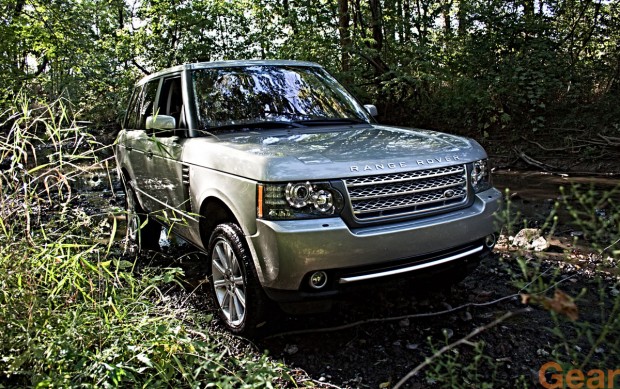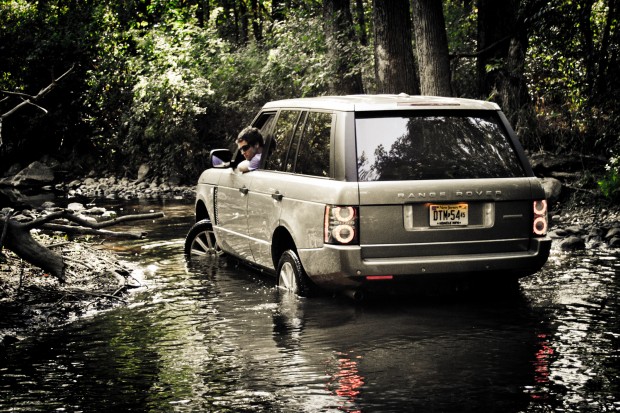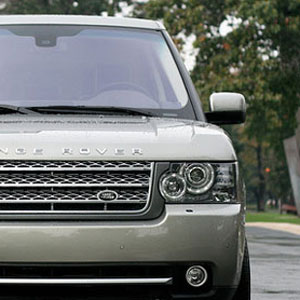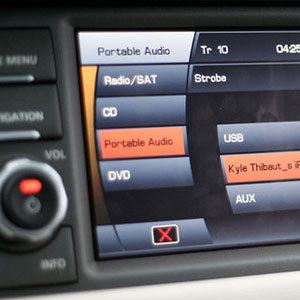The Range Rover is an icon, perched above its peers as the sexiest offroad/onroad SUV on the planet. But does the performance match its looks? We were handed a 2010 Range Rover Supercharged to put to the test for an entire week. During that time we enjoyed off-road trails and river fording, rallying around old farm paths and even traversing an autocross course. We’ve already covered the gadgetry and this is what we have to say about the rest. Spoiler: It is a true sport utility vehicle.
Sport
The Range Rover supercharged has a 510 hp 5.0-liter supercharged V-8 engine matted to a six-speed auto with manumatic mode. In other words, this beast moves—fast, like 0-60 in 5.9 sec fast. There really isn’t anything quite like punching the throttle at a green light—which happened every time and explains the 10 mpg average. Certain profanities almost always commenced upon smooshing the gas pedal. On road, the Range Rover is averse to the speed limit; the chassis feels so refined that cruising velocity feels about 30mph under reality, which can be both good and bad.
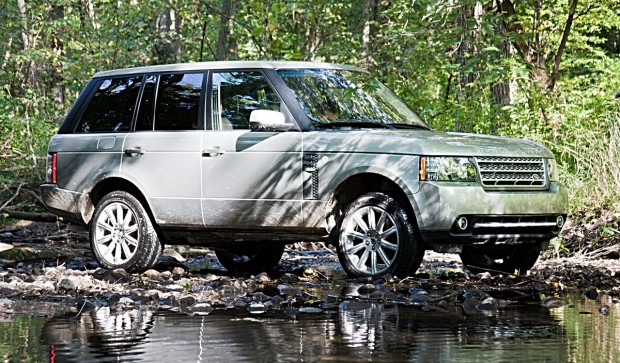
The stopping power on Range Rover is almost sports-car-like, the massive discs are sized at 15-inches in front and 14.4-inches in back and unloads an inscrutable amount of steam when faced with the fury of Poseidon—our spirited-driving-cool-down involved driving right into the local creek. The six-speed transmission was so quick, smooth and accurate that we had to reference the press kit to verify if it had two clutches. In manumatic mode (no paddle-shifters), the downshifts were creaming with rev matching goodness.
This 5900 lb truck defies the laws of physics when carving turns. The steering is light with a modest gain when ramped up, and combined with a fast air suspension, the dynamics are predictable enough for competent driving. It’s not that it’s flat around corners, in fact the body does sag, but with torque coming from all four and superb traction from the sticky 20-inch tires, the Range Rover is as sporty as one could ask for while still allowing for fun in the back country.
Utility
Utility is defined as useful and able to perform several functions. So what makes the utility necessary in a Range Rover? Who would use it? If you’re one of the 99% of Range Rover buyers that thinks $100k is simply too much to take off road; you’re missing out. The Range Rover is a joy off-road. It’s simply capable of driving wherever you’re pointed—whether that means it the direction of the road or the direction orthogonal.
The terrain management system is a neat idea. It’s a system that offers the driver different modes to match the terrain; from rock-crawling to sand and mud ruts. Each distinctive mode controls engine speed, ride height, both the center and rear lock differentials, traction, and the high/low gear. With all the variability the system offers, it makes for a very capable Rover in whichever path you take. The stock tires, however, are not so equipped. Land Rover knows that it would be wise to have street performance tires on the vehicle, since not many customers are serious off-road enthusiasts.
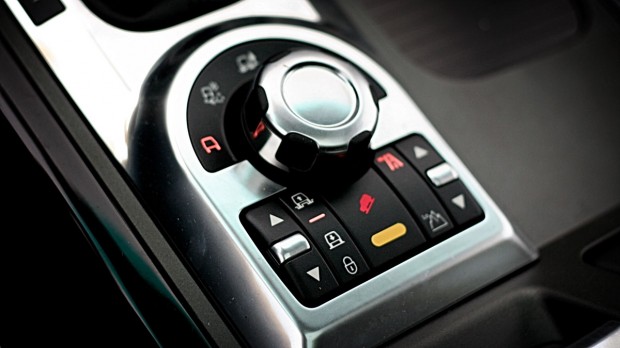
It’s the off-road chops that attract buyers to the flagship model, its history is full of highly competent machines, but price and its infamous popularity have kept this truck more road-worthy. For the Rover, its all about can, not that you will, but that you can, and that is pretty important to buyers. The style is not mistaken, it’s a serious machine and it is a head turner.
Vehicle
As a daily driver, the Range Rover doesn’t make much sense. The gas mileage alone might keep it garaged. But this truck is truly amazing as a driver’s car and engineering marvel. Say what you want for it being a phallus enlarging golden ticket, many people we drove by paid no attention to who was driving. The only to bow to its presence were others in pretentious luxury vehicles not nearly the price and clearly, not as endowed. However, those looking for the club-bound, black-haired Snookies will find the Rover a great herder, as it certainly garners attention and interest from that certain crowd.
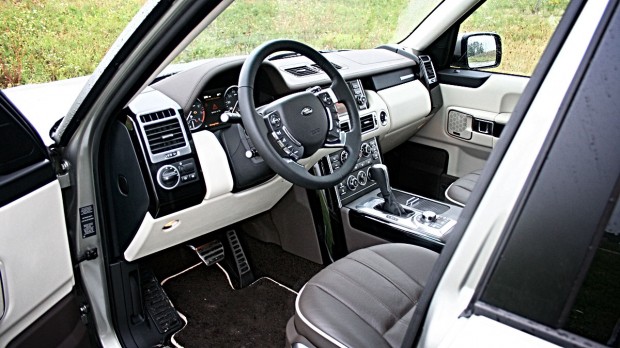
The interior of the Rover is another success. Everything feels great, durable and well thought-out. Other than how far I had to reach my already long arms, everything was where it should be. However, the arrangement of buttons on the steering wheel look less off-road SUV and more in-air 747. The leather is smooth and has a very great feel, for both hand and butt—we spent a lot of time in the Rover over the week and at no time did we ever feel uncomfortable in the seats.
So, the question is, should you buy one? It all depends on your resources and your environmental stance—either way it’s only right to buy some carbon offsets. We were nervous driving the Rover, not because its $100+ sticker, more it’s constant time spent adding petrol.
Although some things about the Rover aren’t to our liking — the in-vehicle gadgets — it’s truly a beast. It’s capability on and off the road is unbelievable and should never be looked down on for being too pretentious. Don’t let pop culture ruin the Range Rover; after all it’s just an SUV.
http://www.flickr.com/apps/slideshow/show.swf?v=71649
